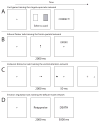Functional network dysfunction in anxiety and anxiety disorders
- PMID: 22658924
- PMCID: PMC3432139
- DOI: 10.1016/j.tins.2012.04.012
Functional network dysfunction in anxiety and anxiety disorders
Abstract
A recent paradigm shift in systems neuroscience is the division of the human brain into functional networks. Functional networks are collections of brain regions with strongly correlated activity both at rest and during cognitive tasks, and each network is believed to implement a different aspect of cognition. We propose here that anxiety disorders and high trait anxiety are associated with a particular pattern of functional network dysfunction: increased functioning of the cingulo-opercular and ventral attention networks as well as decreased functioning of the fronto-parietal and default mode networks. This functional network model can be used to differentiate the pathology of anxiety disorders from other psychiatric illnesses such as major depression and provides targets for novel treatment strategies.
Copyright © 2012 Elsevier Ltd. All rights reserved.
Figures



References
-
- Vincent JL, et al. Intrinsic functional architecture in the anaesthetized monkey brain. Nature. 2007;447:83–86. - PubMed
Publication types
MeSH terms
Grants and funding
- P50 NS006833/NS/NINDS NIH HHS/United States
- NS06833/NS/NINDS NIH HHS/United States
- K24 MH079510/MH/NIMH NIH HHS/United States
- MH090308/MH/NIMH NIH HHS/United States
- MH07791/MH/NIMH NIH HHS/United States
- R21 MH090308/MH/NIMH NIH HHS/United States
- 5R01HD61117-6/HD/NICHD NIH HHS/United States
- AA017413/AA/NIAAA NIH HHS/United States
- R01 AA017413/AA/NIAAA NIH HHS/United States
- R01 MH077791/MH/NIMH NIH HHS/United States
- K24 65421/PHS HHS/United States
- R01 MH096482/MH/NIMH NIH HHS/United States
- R01 HD061117/HD/NICHD NIH HHS/United States
- R01 MH096482-01/MH/NIMH NIH HHS/United States
LinkOut - more resources
Full Text Sources
Other Literature Sources
Medical

